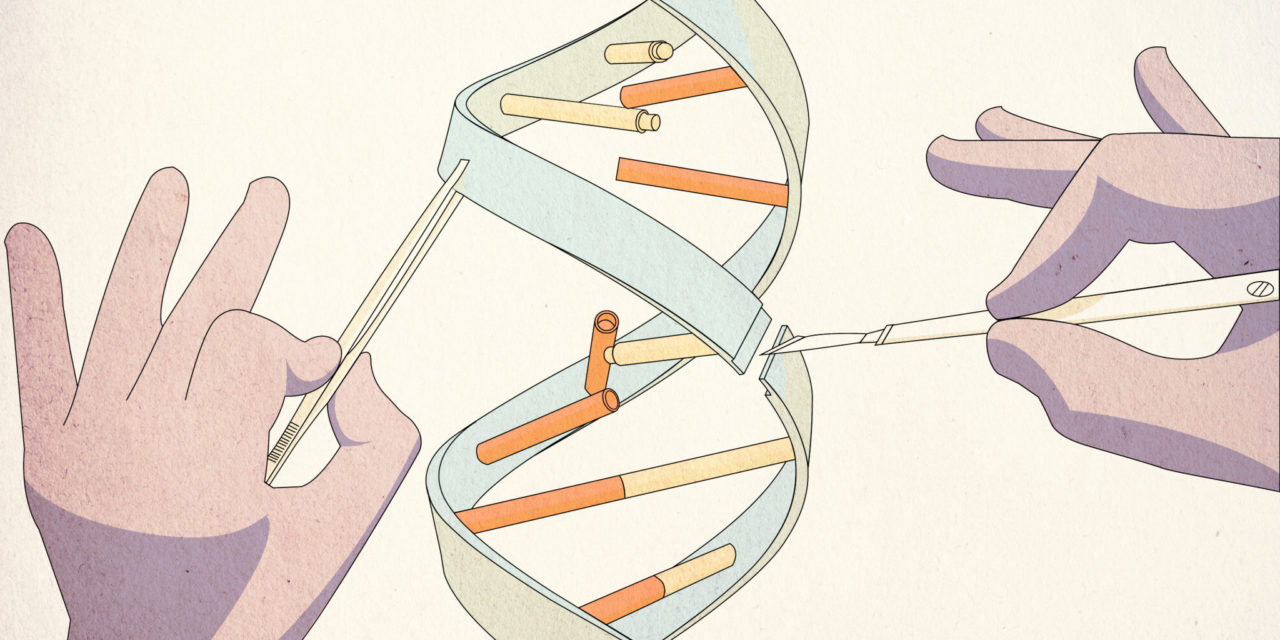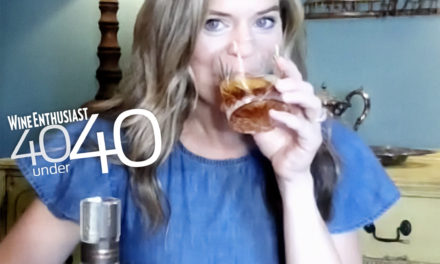The wine industry is constantly evolving to address the challenges of grape growing and winemaking, as well as respond to a continually changing market. An industry that marries art and science, wine plays a balancing act between tradition and scientific advancement. One of the newest discoveries with the potential to spark innovation within the industry is DNA and synthetic biology.
In 2007, the genome for a Pinot Noir cultivar was “cracked” for the first time, with the genome for the yeast Saccharomyces cerevisiae discovered one year later. Now that the Saccharomyces genome has been catalogued, can it be tweaked to create the “perfect wine”? The answer lies, in part, with the field of synthetic biology.
Studying Saccharomyces cerevisiae
The field of synthetic biology, a marriage between biology and engineering, is ripe with collaborative ideas and the potential to improve upon nature’s basic designs. Specifically, researchers can chemically synthesize—or create—a strand of DNA; they can also edit an existing piece of DNA.
Saccharomyces has been used in research studies many times and has many “firsts” to its name, including (but not limited to) the first microorganism to be: domesticated for production of food and beverages; identified as a living being responsible for chemical changes in wine; used as a host for development of a food enzyme; and the first to have its genome fully discovered.
The Saccharomyces cerevisiae genome spans 16 chromosomes carrying 6,000 genes (5,000 of which are considered “nonessential”). In 2011, part of chromosome III was synthetized, with the full chromosome following in 2014. The full synthetic version of chromosome III, with nonessential DNA sequence deletions and tweaks to make it “efficient,” replaced the native version in the lab, resulting in a synthetic Saccharomyces that could perform the same way as the native yeast. It’s this work on Saccharomyces that spurred the question: If a chromosome can be altered without affecting performance, can the entire genome be altered? Enter: The Yeast 2.0 Project.
Yeast 2.0
According to its website, the Synthetic Yeast Genome Project (Sc2.0), or Yeast 2.0, is the “world’s first synthetic eukaryotic genome project that aims to create a novel, rationalized version of the genome of the yeast species Saccharomyces cerevisiae.” The goal of Yeast 2.0 is to create a synthetic version of Saccharomyces that removes all non-essential DNA sequences while maintaining the phenotypic integrity of the yeast.
Established in 2011, Yeast 2.0 has synthesized nearly all the Saccharomyces cerevisiae genome, with the design and structure of six of the 16 chromosomes published in Science. According to Dr. Isak S. Pretorius, deputy vice chancellor and vice president of research at Macquarie University in Sydney, Australia, who’s a researcher on the Yeast 2.0 project, “It’s highly likely that all 16 synthetic chromosomes will be done and [fixed for any design-related issues] before the seventh International Synthetic Yeast 2.0 and Synthetic Genomes Conference in November [2018].” While these chromosomes are currently in separate strains, Pretorius anticipates them being consolidated into a single cell by the end of this year or early 2019.
As it relates directly to wine, Pretorius says he and former colleagues at the Australian Wine Research Institute (AWRI) are currently working on a project building a “synthetic neochromosome” that includes genes from other non-wine Saccharomyces yeast strains, which will be incorporated into Saccharomyces. With this hybrid yeast, the group aims to discover how wine yeast strains evolved over time, and exactly which genes are essential for winemaking. According to Pretorius, this work is 90 percent complete.
Creating the “perfect yeast”
While using synthetic biology to design and create a strain of yeast capable of producing a specific style of wine is new, manipulating Saccharomyces to create a specific style of wine is not. Specifically, while there are currently two commercially available genetically modified yeast strains on the market, other yeasts have been manipulated for years by non-GM methods, such as hybridization/breeding and the selection of yeasts that are better at a desired characteristic more than others over time. Additionally, there are other genetically modified yeasts that, while not available commercially, have been the subject of research studies in recent years.
Dr. Karen Fortmann, senior research scientist at White Labs in San Diego, Calif., highlighted a few of these studies as “interesting applications that science can have on winemaking.” Specifically, she referenced a 2007 study involving genetically engineered wine yeast to “constitutively express a carbon-sulfur lyase gene leading to positive impact on volatile thiols from Sauvignon Blanc grape juice.” She also highlighted other studies taking similar genetic modification approaches, such as engineering yeasts to enhance fruity esters, fusel alcohols, and to divert carbon metabolism from ethanol production.
What makes the Yeast 2.0 project different from the rest is, while previous strains have been genetically modified using inserted code sources from E. coli and other similar methods, the Yeast 2.0 project uses techniques from synthetic biology to build an entire strain from scratch, including only the portions of the genetic code that are necessary for normal functioning.
Raspberry Chardonnay
While most of the research from the Yeast 2.0 project uses a non-wine laboratory strain, in 2016, part of the team at AWRI put the idea of a synthesized Saccharomyces to the test in wine.
First, it synthesized a yeast strain to produce raspberry ketone (4-[4-hydroxyphenyl]butan-2-one), which results in a raspberry flavor, then made a Chardonnay using this bioengineered yeast, as it’s not normally a wine that exhibits raspberry flavors. The results showed that Chardonnay made using this synthetic yeast had raspberry ketone concentrations two orders of magnitude higher than sensory threshold. Creating a wine with an unusual flavor (such as raspberry) by inoculating it with a yeast designed to produce raspberry ketone provides evidence that applying this kind of technology to winemaking is possible and could have major implications for the industry.
The Yeast 2.0 project has also created yeasts that can synthesize vanillin and resveratrol. However, these strains were not tested in a wine setting.
The Commercial Marketplace
Asked about commercial applications for wineries, Pretorius says it will be a “long while” before any of the synthetically produced Saccharomyces strains are ready for commercial use in wine. More research needs to be done, including whether changes to the DNA will somehow alter the sensory profile of a wine in ways that weren’t the original target (or some other unintended outcome). Regardless, the potential for using the technology exists, and it’s only a matter of time before someone puts it to use.
Fortmann says the biggest benefit to winemakers for this technology would be the ability to “[use the] raw materials to their fullest potential. If you could get the best flavors from your grapes by using a synthetic/modified yeast strain, why wouldn’t you?”
According to Larry Schaffer, winemaker at Tercero Wines in Santa Barbara County, Calif., however, “this new research, albeit interesting, [still leaves many] questions. It appears possible to boost up the appearance of a specific compound in the finished juice, but does it remain in the wine? If it does, I can certainly see a market for these types of yeast—but I won’t be taking part. To me, yeast has a job to do; I like it to get the job done but stay ‘neutral’ in the process.”
Preparing for the Future
Synthetic biology and the Yeast 2.0 project are propelling the potential for huge technological advancement in the wine industry and beyond. This man-made DNA technology will likely spur heated debates—though, academically speaking, one can argue this technology could be beneficial for the wine industry. Fortmann says the biggest challenge for this type of technology would be “consumer education and overcoming preconceived notions and/or bias.”
With a changing climate and the need for winemakers to adapt to an unknown future, embracing synthetically created yeasts could be one way for the industry to ensure a promising future. Certainly, research on synthetically created yeasts isn’t complete, particularly in the wine model, but that’s exactly what programs like the Yeast 2.0 project are for. It’s only a matter of time before we see where the true role for synthetic biology lies in the advancement of the wine industry (and beyond).
Press releases are generated outside of Spirited magazine and the information contained does not necessarily reflect the opinion of Spirited or its parent company, Sonoma Media Investments.










